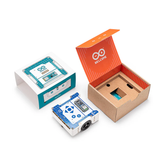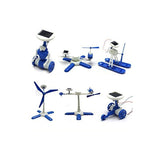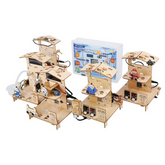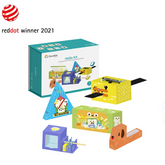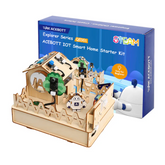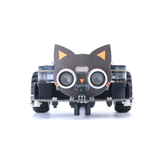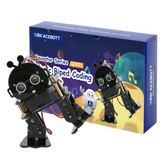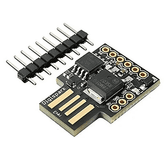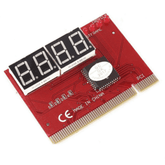Top 10 STEM Games for Classrooms That Make Learning Fun
Summary
The integration of technology and interactive methodologies has revolutionized how educators approach Science, Technology, Engineering, and Math concepts in today's classrooms.
Modern students thrive when learning becomes engaging, hands-on, and directly applicable to real-world scenarios.
Through carefully designed STEM games, educators can transform traditional lessons into dynamic experiences that foster curiosity, critical thinking, and collaboration among students.
Educational research consistently demonstrates that STEM learning through play creates meaningful connections between abstract concepts and practical applications.
When students engage with interactive challenges, they develop essential problem-solving skills while naturally absorbing complex scientific principles.
This gamified approach to learning not only improves retention rates but also cultivates the innovative mindset necessary for success in an increasingly technology-driven world.
Below, we present 10 exciting 10 games that can be included as classroom activities,

Top 10 STEM Games for Classrooms
1. Arduino Alvik Robot Navigation Challenge (Programming & Robotics)
There's something magical about watching students program their first robot to navigate through obstacle courses! The Arduino Alvik brings that professional robotics feel right into your classroom, making every student feel like a real robotics engineer.
This advanced programming game for kids combines multiple sensors with powerful programming capabilities.

Materials Needed:
- Arduino Alvik Robot
- Obstacle course materials (cones, cardboard barriers)
- Charging station
- Programming computers
- Measurement tools
Game Overview:
Students program the Arduino Alvik robot using MicroPython or Arduino IDE to navigate complex obstacle courses, utilizing its time-of-flight distance sensor, color detection, and gyroscope. Teams compete to complete courses in the shortest time while collecting colored objects along the way.
This activity integrates basics of computer programming with real-world robotics applications, teaching students about sensor integration, autonomous navigation, and text-based-coding. The robot's LEGO compatibility allows for endless customization possibilities.
2. Solar Power Robot Challenge (Renewable Energy & Engineering)

I love how this 6-in-1 solar kit transforms students into renewable energy engineers! Watching kids build six different solar-powered creations while learning about sustainable energy never gets old.
This hands-on experience makes environmental science tangible and exciting for young learners.
Materials Needed:
- 6-in-1 Rechargeable Solar Power DIY Robots Kit
- Sunlight or bright LED lamps
- Stopwatch
- Weight testing materials
- Recording sheets
Game Overview:
Students construct six different solar-powered machines, including helicopters, robots, windmills, and airboats, then test their performance under various light conditions.
Teams compete to see whose solar creations perform best in speed, endurance, and power generation.
These STEM games experience teaches renewable energy concepts, motor mechanics, and environmental science while demonstrating how Science, Technology, Engineering, and Math concepts work together in sustainable technology solutions.
3. Smart Home Innovation Lab (IoT & Home Automation)

There's nothing quite like the excitement when students realize they can actually control their environment through code! The 5-in-1 Smart Home Kit transforms abstract IoT concepts into concrete, interactive experiences that students can see, touch, and control with their own programs.
Materials Needed:
- 5-in-1 ACEBOTT ESP32 STEM School Smart Home Kit
- WiFi network access
- Mobile devices for remote control
- Assembly tools (included)
- Project planning sheets
Game Overview:
Students build five different smart home systems including automated pet feeders, security alarms, watering systems, and access control.
Teams work through progressively complex projects, learning custom coding learning through Arduino IDE while implementing real IoT solutions.
This games for STEM classroom activity demonstrates how modern homes use technology, teaching programming fundamentals, sensor integration, and wireless communication protocols essential for understanding connected devices.
4. Plug-and-Play Electronics Adventure (Logic & Circuit Design)

I absolutely love how the Crowbits Hello Kit removes the intimidation factor from electronics! Students who might be scared of "breaking something" suddenly become confident experimenters when they realize these modules just snap together like building blocks.
Materials Needed:
- Elecrow Crowbits Hello Kit (7 modules)
- LEGO blocks for integration
- Cardboard project templates
- Battery pack
- Project instruction cards
Game Overview:
Students create interactive projects using plug-and-play electronic modules including touch sensors, LED indicators, and sound generators.
This STEM games for kids approach requires no prior programming knowledge, focusing instead on logical thinking and cause-effect relationships.
Teams build cardboard creations enhanced with electronic components, learning basic circuit principles through experimentation.
The LEGO compatibility encourages creative integration while teaching fundamental electronics concepts through Hands-on STEM learning.
5. IoT Home Security Championship (Technology & Problem-Solving)

Watching students become cybersecurity experts and home automation specialists in one project is incredible! The ESP32 Smart Home IoT Kit gives students real-world problem-solving scenarios that mirror actual technology careers while keeping the learning fun and accessible.
Materials Needed:
- ACEBOTT ESP32 Smart Home IoT Starter Kit
- Network router for connectivity
- Smartphone or tablet
- Assembly instructions
- Security scenario cards
Game Overview:
Students design comprehensive home security systems incorporating motion sensors, RFID access control, fire detection, and automated lighting responses.
Teams program their systems using block-coding or Arduino C++, then test effectiveness against simulated security scenarios.
This advanced STEM activities project teaches network programming, sensor integration, and system design while demonstrating practical applications of IoT technology in modern smart homes.
6. Voice-Controlled Robot Competition (AI & Speech Recognition)

The moment students realize they can literally talk to their robot and make it obey commands is pure magic! This STEM games for students experience brings science fiction into reality, making artificial intelligence concepts accessible and exciting for young minds.
Materials Needed:
- WeeeCore Bot AI Voice Programming Robot
- Clear speaking environment
- Voice command reference sheets
- Competition arena setup
- Programming interface
Game Overview:
Students program voice-controlled robots to respond to specific commands, competing in challenges that require precise audio recognition and response programming.
Teams develop custom voice commands, train their robots to recognize different speech patterns, and design interactive conversations.
This cutting-edge STEM education activity demonstrates AI concepts, natural language processing, and human-computer interaction while building essential STEM skills in programming and system design.
7. Bionic Walking Robot Engineering (Biomechanics & Robotics)

There's something fascinating about robots that walk like living creatures! The bionic biped robot kit shows students how nature inspires engineering, creating those amazing "aha!" moments when they understand how balance, movement, and programming work together.
Materials Needed:
- ACEBOTT Bionic Biped Robot Kit for Arduino/ESP32
- Programming computer
- Level surface for testing
- Measuring tools for gait analysis
- Video recording device
Game Overview:
Students build and program humanoid robots that walk, balance, and perform tasks using biomechanically-inspired designs. Teams experiment with different walking gaits, balance algorithms, and movement patterns while learning about human locomotion and robotic engineering.
This advanced STEM challenges for students project integrates mechanical engineering, programming, and biological sciences, teaching students how nature's designs can be replicated through technology and math skills in motion analysis.
8. Spider Robot Exploration Mission (Multi-Legged Robotics & Programming)

The spider robot never fails to amaze students with its realistic movement patterns! This Classroom games for science and math experience combines the fascination of arachnid biology with advanced robotics programming, creating an unforgettable learning adventure.
Materials Needed:
- ACEBOTT ESP8266 Quadruped Bionic Spider Robot Kit
- Obstacle course materials
- Remote control setup
- Programming environment
- Mission challenge cards
Game Overview:
Students assemble and program four-legged spider robots capable of complex movement patterns and autonomous navigation.
Teams design missions where their spider robots must traverse challenging terrain, avoid obstacles, and complete specific tasks.
This STEM learning through play activity teaches multi-servo coordination, sensor programming, and biomimetic design while demonstrating how gamified learning in STEM can make complex robotics concepts accessible and engaging.
9. DIY Drone Academy (Aerodynamics & Flight Control)

Building and flying their own wooden drone gives students an incredible sense of accomplishment! This hands-on aviation experience transforms abstract physics concepts into soaring reality, making every successful flight a celebration of engineering achievement.
Materials Needed:
- GKFESCC RC DIY Wooden Drone Kit for Kids
- Assembly tools (included)
- Open flight area
- Safety equipment
- Flight log sheets
Game Overview:
Students construct wooden drones from scratch, learning about aerodynamics, propeller physics, and remote-control systems.
Teams test different configurations, adjust for optimal flight performance, and compete in precision flying challenges.
This STEM games experience teaches aviation principles, mechanical engineering, and physics concepts while emphasizing safety protocols and responsible technology use, making it perfect for introducing students to aerospace engineering concepts.
10. Coding Robot Adventures for Young Learners (Early Programming & Logic)

I'm always amazed by how quickly young children master programming concepts when they're presented in a playful, screen-free format! The Matatalab Coding Robot proves that you don't need computers to teach coding games for kids – just creativity and logical thinking.
Materials Needed:
- Matata Studio Coding Robot Set for Kids Ages 4-9
- Command block sets
- Adventure map boards
- Challenge cards
- Story scenario props
Game Overview:
Young students program robots using physical coding blocks, creating sequences of commands that control robot movement and actions.
This screen-free programming game for kids teaches fundamental programming concepts like sequences, loops, and functions through tangible manipulation of coding blocks.
Teams solve increasingly complex puzzles, rescue missions, and creative storytelling adventures while developing logical thinking skills essential for future STEM education success.
Conclusion
The implementation of STEM games in classroom environments represents a fundamental shift toward more engaging and effective educational methodologies.
These interactive approaches not only improve student comprehension of complex scientific concepts but also develop essential 21st-century skills including collaboration, critical thinking, and creative problem-solving.
Through carefully designed Hands-on STEM learning experiences, educators can inspire the next generation of innovators and scientists while making education both enjoyable and meaningful.



